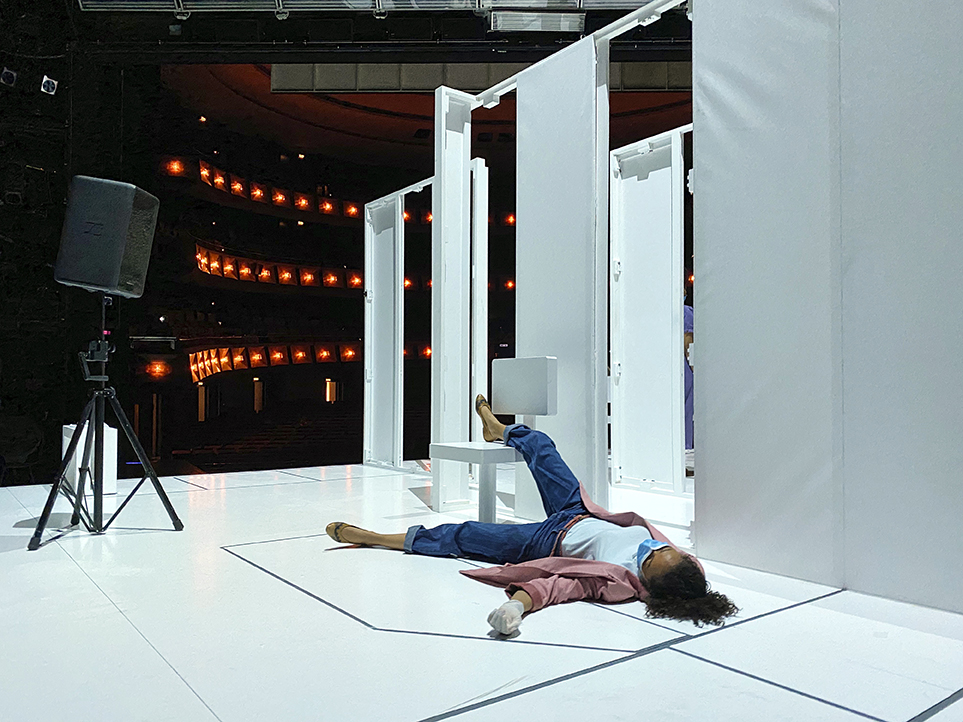 Initially, I thought it was a typo in the program book of the Manchester International Festival – the space between the figures in the title ‘do it 20 13’.
Initially, I thought it was a typo in the program book of the Manchester International Festival – the space between the figures in the title ‘do it 20 13’.
When I saw the title, though, also printed on the museum walls of the Manchester Art Gallery, it turned out it wasn’t a typo. It was done deliberately as this was the twentieth anniversary of a show that began life in 1993. ‘do it’ (also consistently written in lowercase) is conceived and curated by Hans Ulrich Obrist in conversation with Christian Boltanski and Bertrand Lavier and since 1993 hundreds of artist have been invited to submit artists’ instructions.
The instructions range from altering our social behaviour such as “When you are walking, stop and smile at a stranger” by Louise Bourgeois, to political with Ai Weiwei’s instructions how to make a spray device to block a CCTV surveillance camera, to a DIY Plinth where Peter Saville gives the visitor instructions for the fabrication of a cardboard display plinth on which they can place an item of their choice.
‘do it’ is a stimulating show that seduces you right upon entering when you are attracted by the smell of baked onions, garlic and jalapeno chilies when a volunteer of the Manchester International Festival is preparing a Thai chili paste based on the instructions of the artist Rirkrit Tiravanija.
200% spoke with Kate Fowle, the director at large of Independent Curators International (ICI) and editor of the ‘do it’ compendium, about the 20 years’ history of the exhibition and the development of audiences’ interaction compared to that of the early days in 1993.
 200%: These days audiences are able to more actively immerse themselves in art exhibitions, concerts and film (3D). Do you consider yourselves with ‘do it’ as a frontrunner for a new medium in which people can engage in the arts?
200%: These days audiences are able to more actively immerse themselves in art exhibitions, concerts and film (3D). Do you consider yourselves with ‘do it’ as a frontrunner for a new medium in which people can engage in the arts?
Kate Fowle: It’s a very modernist way of thinking to ascribe medium as the entry point to understanding an artwork. 3D does not make experiencing artwork anymore immersive if you are still a passive viewer. What ‘do it’ does, which is particularly different, is allow you to perform. ‘do it’ challenges one to create and give new language, and form to the instructions.
200%: Twenty years ago, when the project started, do you know if there was, initially, some reticence from the audience due to a lack of understanding of the concept of ‘do it’?
KF: When ICI first toured ‘do it’ in 1997 (four years after the first ‘do it’ in Austria), the project was accepted with open arms, probably due to the lack of accessible exhibitions in which people could participate. ‘do it’ was perceived as a sigh of relief from the traditional hierarchy produced between active artist/passive audience, which was still the most common way of experiencing art in the 1990s. Audiences still tend to think of exhibition spaces as sites of learning and so we think ‘do it’ audiences were particularly expectant and excited to learn through the creative process.

 200%: How does the audience interaction compare and contrast with that of today, to that of the early years?
200%: How does the audience interaction compare and contrast with that of today, to that of the early years?
KF: Today we can document the ripple effects of ‘do it’ much better than we could 20 years ago. ICI and Hans Ulrich Obrist have organized a ‘do it’ archive exhibition where you can really trace earlier presentations of the project through slides, publications, and correspondence. We also advertised an open call on e-flux to collect “unofficial” ‘do it’ ephemera which proved a copious amount of incarnations and outcomes. In the show, which is currently on view in Manchester, we see a multitude of media such as video, websites, press conferences, and more, that is able to document and spread related information and outcomes much more quickly and to broader audiences through different channels.
200%: With each installation, did the artists have an expectation of how the instructions are likely to be interpreted by the audience, or is it their view that any reaction to the instructions is a good reaction?
KF: The artists providing instructions for ‘do it’ understand the open-ended nature of the project, and for them that is why it’s such an interesting project in which to participate. Seeing your work interpreted in many different ways around the world can be a thrilling. Recently, we discovered a box of ‘do it’ interpretations that Mike Kelley had been collecting in his studio over the years. For some artists, the reactions can be invaluable.
 200%: ‘do it’ has been organized in museums all over the world. Is there a lost in translation aspect as to how instructions are interpreted in different cultures and countries?
200%: ‘do it’ has been organized in museums all over the world. Is there a lost in translation aspect as to how instructions are interpreted in different cultures and countries?
KF: Since 1993 the instructions have been translated into about 10 different languages. Yes, there are cultural and philosophical differences in understanding the verb “to do”, but that’s what makes for an interestingly heterogeneous project.
Interview conducted by Thierry Somers, Images from top to bottom: Lawrence Weiner, Rirkrit Tiravanija, Ai Weiwei, Peter Saville
‘do it 20 13’. Curated by Hans Ulrich Obrist, realised in Manchester with Peter Saville, Richard Wentworth, Maria Balshaw, Natasha Howes and Kate Fowle. Alaina Claire Feldman, Exhibitions Manager at ICI, on behalf of Hans Ulrich Obrist and ICI for ‘do it’. Until 22 September 2013 at the Manchester Art Gallery.










